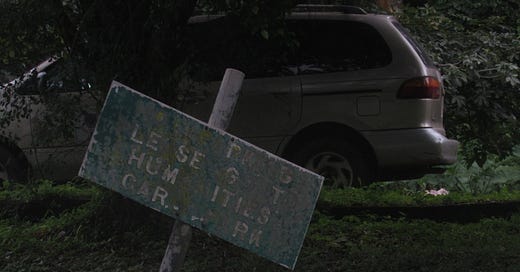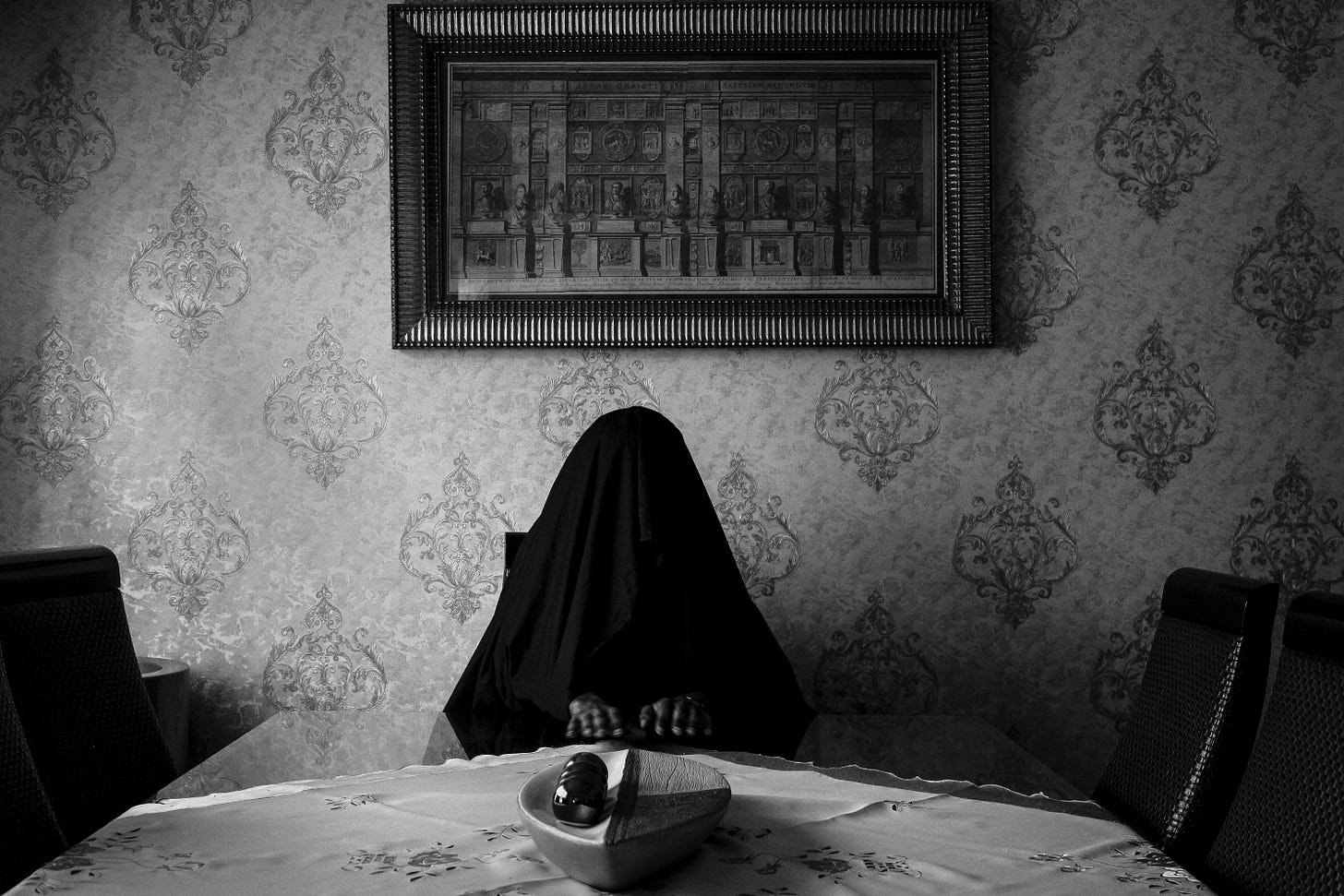In a general sense, the only nameable things in the dim-lit photograph are a signpost, a car, and plant life. Each item is set beside the other in a specific way, but can be summed as follows: the car is parked on a carpet of grass, behind an askew signpost. I make out an instruction from the worn-out inscription: NO PARKING PLEASE GO TO HUMANITIES CAR PARK. As I follow the faded letters, the car seems in trespass, shunting across a forbidden line.
— Emmanuel Iduma
“I have been more devoted to places and people since I picked up a camera.”
“Patina” was taken at Obafemi Awolowo University in Ile-Ife, Nigeria.
I had just finished my degree at the university and wanted to capture moments and memories. The campus was empty and students who remained were either preparing to go on vacation or waiting around to finish paperwork.
I took the photograph while waiting. I was waiting for someone dear to me to come around when the colour of the road sign caught my attention. Rusted green over a backdrop of fresh green grass. A slate-colored car, a slate-colored prop. The colour coordination was listless and dark.
It is a testament of what one feels after graduating from a university. What is next? Where should I go? Should I follow this or that road?
“Patina” is unlike the pictures I take. It is more introspective.
For me, photography is paying attention to the world and making others pay attention to the world — whether the multifarious world we create or the one that is created for us to inhabit. I have been more conscious of and devoted to places and people since I picked up a camera.
— Mayowa Oyewale
About Mayowa Oyewale
Mayowa Oyewale is a Nigerian poet, photographer, and journalist who is interested in collecting, creating and curating film and pictures. Some of his writing have appeared in Gallery 1957, POETRY, OkayAfrica, and Gutter. See more of his work on Instagram.
Last Week — “Isolation,” by Mpumelelo Buthelezi
The image of myself pictured inside my grandmother's dining room was a reenactment of iconic paintings of the biblical 12 disciples during the Last Supper, since the body of work touches on spirituality. I then began to ask questions around my own personal spiritual purpose in relation to religious belief systems, since I grew up in a predominantly Seventh-Day Adventist family.
SUPPORT TENDER PHOTO
This is the 79th edition of this publication, which also read on web (best for viewing images), and via the Substack iOS/Android apps.
Every Wednesday I feature one photograph and the photographer who took it: you’d read a short caption from me, and a statement from the photographer. Every Saturday, between June 3–August 19, I’m writing a series of micro-essays in response to sequences of photographs previously featured on the newsletter. My hope is to engage with early to mid-career African photographers, and to create a platform in which photographers lead the cataloguing and criticism of their work.
Photographers can now submit their work for consideration.
Thank you for reading. If this newsletter was shared with you, consider subscribing, or forward to a friend. Please whitelist the newsletter to ensure you never miss it.





